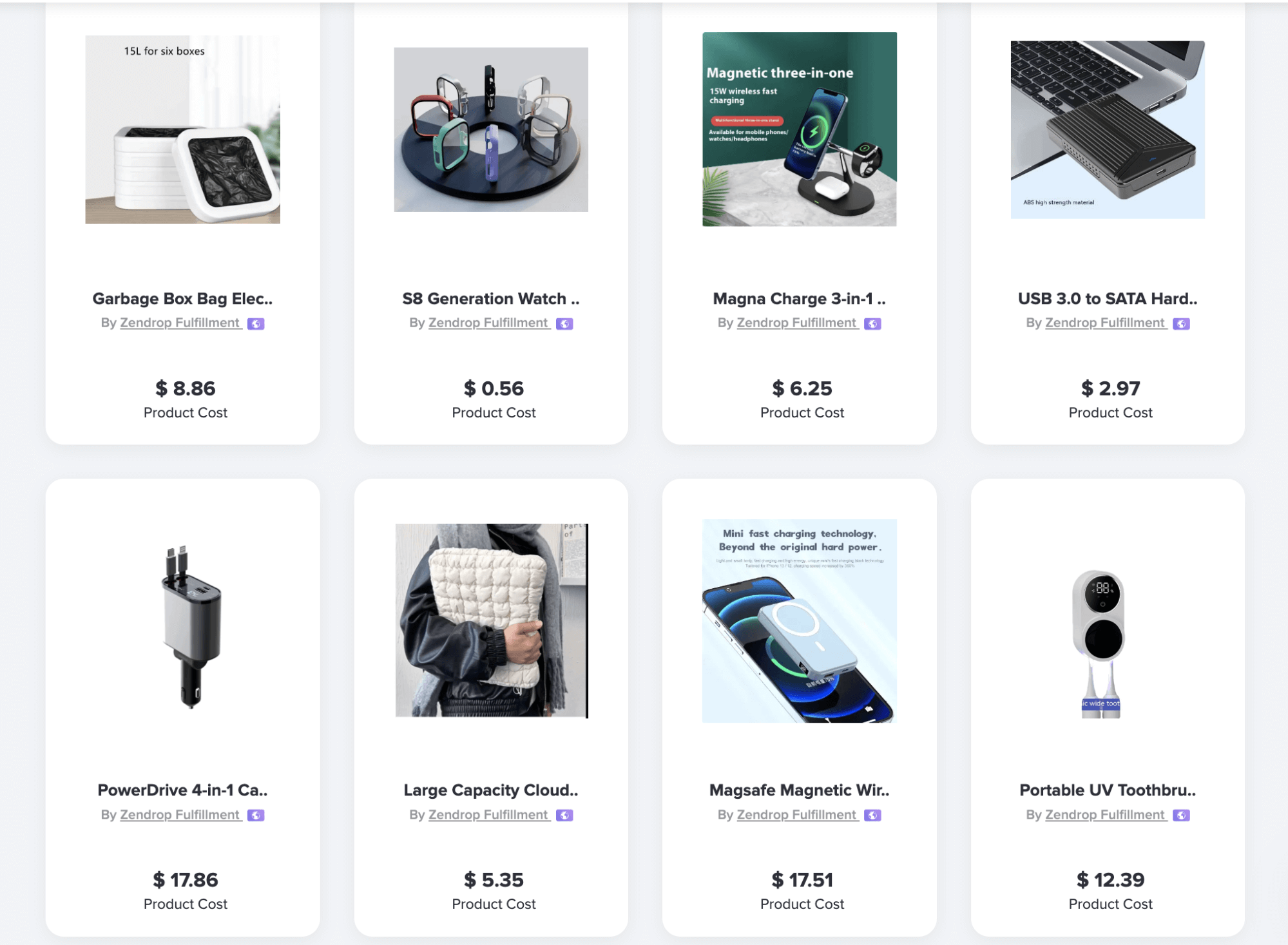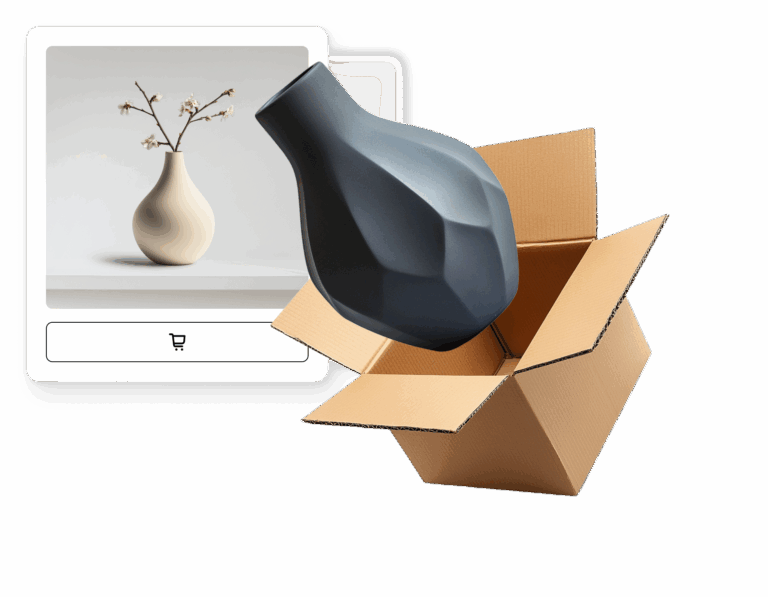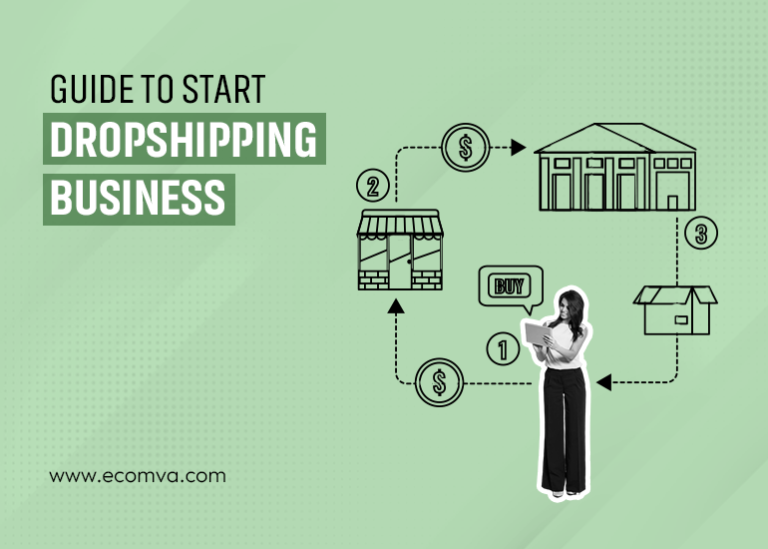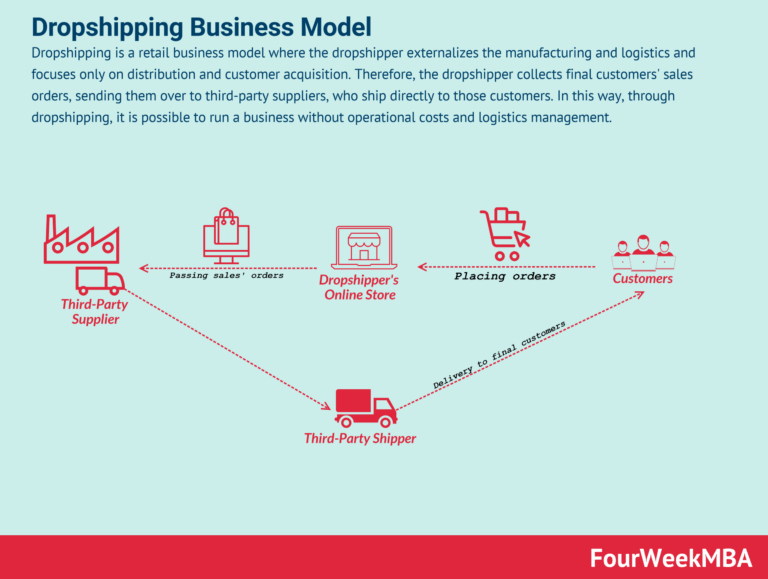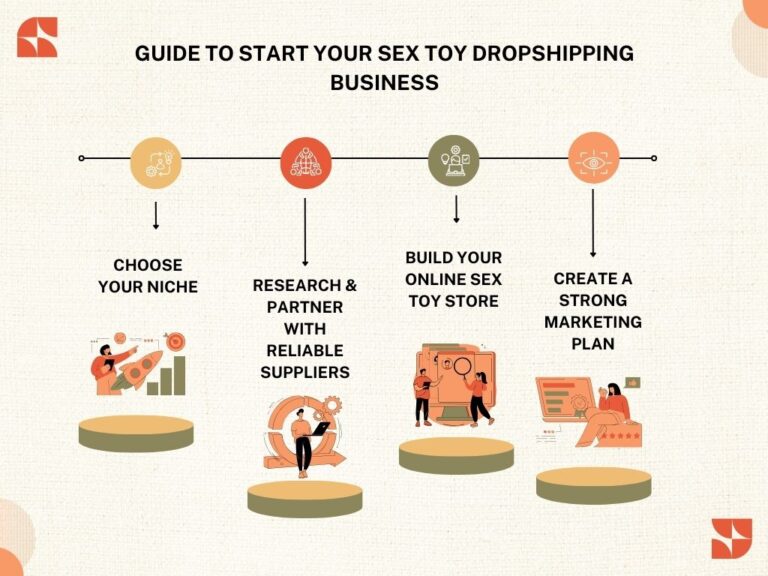How to Start Dropshipping in 2025 (A Beginner’s Guide)
Your Complete Guide to dropshipping items
Welcome to Your Entrepreneurial Journey
Congratulations on taking the first step toward starting your own online business! If you’re reading this, you likely have the ambition to become an entrepreneur, and you’re in the right place. The world of e-commerce offers exciting opportunities, particularly through the dropshipping model, which allows you to run a business without the need for hefty investments or inventory management.
What is Dropshipping?
At its core, dropshipping is a retail fulfillment method where you, as the seller, don’t keep the products you sell in stock. Instead, when a customer makes a purchase, you simply order the item from a third-party supplier who ships it directly to the customer. This means you can focus on marketing and customer service while avoiding the complexities of inventory management. The appeal of dropshipping lies in its low startup costs and remarkable flexibility, making it an ideal choice for beginners and aspiring entrepreneurs like yourself.
What This Guide Offers
In this comprehensive guide, we will walk you through everything you need to know to successfully navigate the dropshipping landscape. We’ll cover:
-
Identifying Profitable Products: Learn how to conduct market research to find trending products that your target audience craves.
-
Choosing Reliable Suppliers: Discover how to vet and select trustworthy suppliers to ensure your customers receive quality products on time.
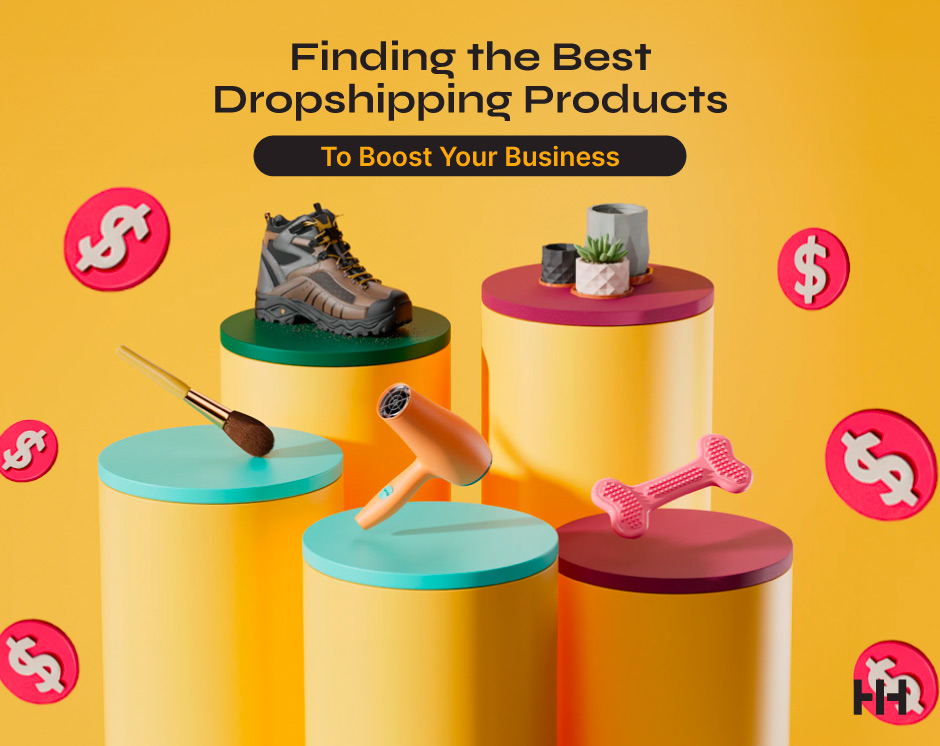
-
Setting Up Your Online Store: Step-by-step instructions on creating an appealing e-commerce website that converts visitors into customers.
-
Marketing Your Store: Effective strategies to promote your products and drive traffic to your online shop.
-
Making Your First Sale: Tips and tricks to close your first sale and build momentum for your business.
Turning Dreams into Reality
Starting a dropshipping business is more than just a side hustle; it’s a pathway to financial independence and creative freedom. With the right mindset and tools, you can transform your entrepreneurial dream into a thriving reality. As you dive into this guide, remember that every successful entrepreneur started where you are today—with a vision and a willingness to learn. Embrace the journey, and let’s turn your aspirations into achievements!
What You’ll Learn In This Guide
- Your Complete Guide to dropshipping items
- How Does Dropshipping Actually Work? A Step-by-Step Breakdown
- The Pros and Cons of Dropshipping: Is It Right for You?
- Step 1: Finding a Profitable Niche and Winning Products
- Step 2: Choosing the Right Dropshipping Suppliers
- Step 3: Building Your Online Store
- Step 4: Marketing Your Dropshipping Business to Get Sales
- Common Mistakes to Avoid as a Beginner
- Frequently Asked Questions (FAQs) about dropshipping items
- Conclusion: Your Next Steps to Launching Your Business
- Important Disclaimer
How Does Dropshipping Actually Work? A Step-by-Step Breakdown
Understanding the Dropshipping Process: A Step-by-Step Guide
Starting a dropshipping business can seem daunting, but once you understand how the model works, it becomes much clearer. Think of yourself as a digital storefront or a middleman connecting customers with products without ever holding inventory. Here’s a breakdown of the dropshipping process in four simple steps:
1. Customer Places an Order on Your Online Store
The journey begins when a customer visits your online store and places an order for a product. This could be through various platforms like Shopify, WooCommerce, or even social media channels. At this point, the customer has browsed your offerings, found something they love, and decided to make a purchase.
2. You Receive the Payment
Once the order is placed, you receive payment from the customer. This step is crucial as it validates the transaction and provides you with the funds necessary to fulfill the order. The amount paid usually includes the product cost plus any shipping fees, which can be marked up from the supplier’s price to ensure a profit margin. For instance, if your supplier charges $20 for an item and you sell it for $30, your profit is $10.
3. You Forward the Order to Your Supplier
After receiving the payment, your next task is to forward the order details to your supplier. This step can be done manually or automatically, depending on the system you have in place. You’ll provide the supplier with the customer’s shipping details so they can ship the product directly to the customer. It’s essential to choose a reliable supplier who can process orders efficiently and has a track record of timely deliveries.
4. The Supplier Ships the Product Directly to the Customer
Once the supplier receives your order, they handle everything from packaging to shipping. The product is sent directly to your customer without you ever having to touch it. This is one of the most appealing aspects of dropshipping; you don’t need to worry about inventory management or shipping logistics. The supplier takes care of these tasks, allowing you to focus on marketing and growing your business.
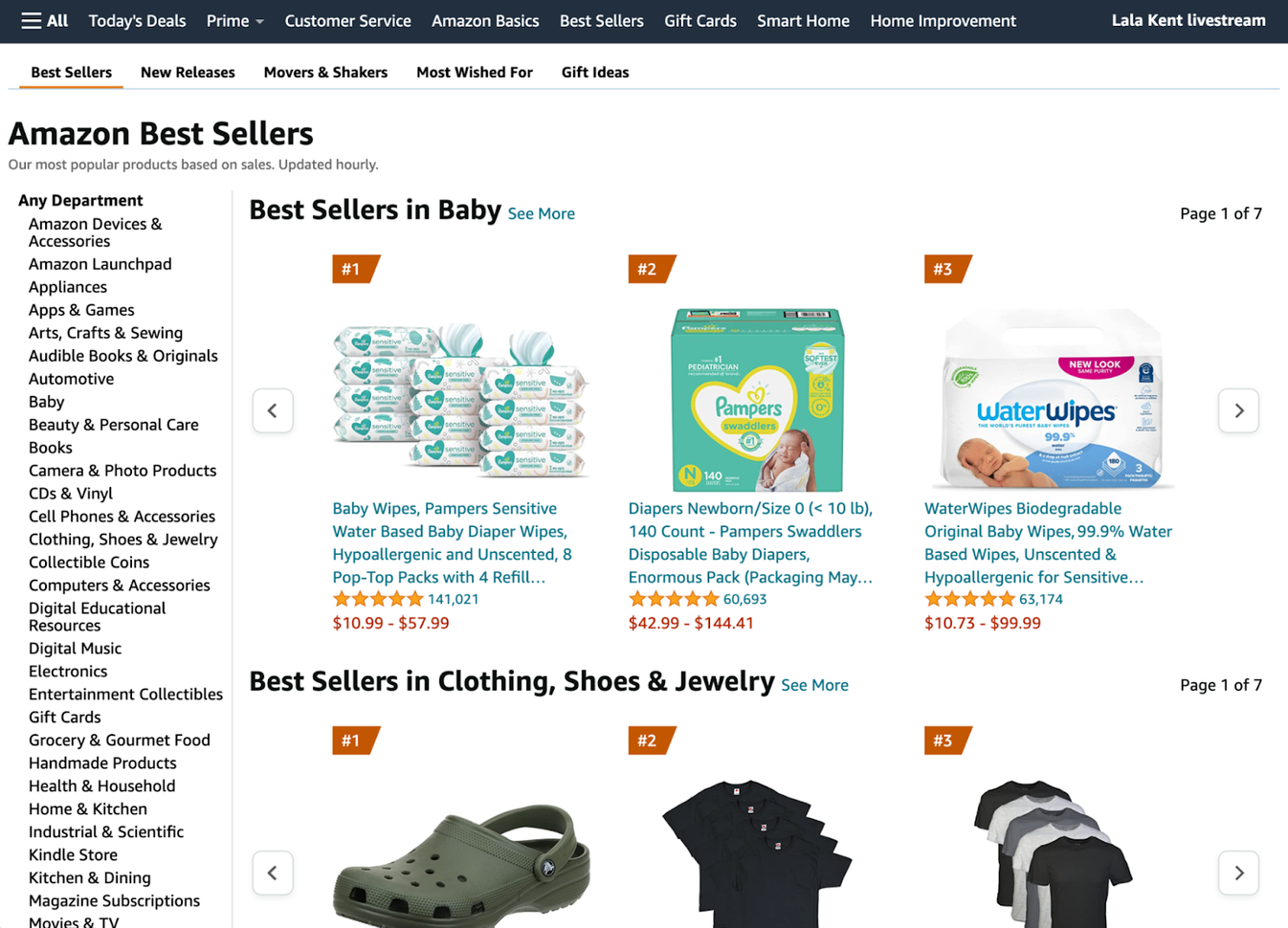
The Flow of Money and Goods
To visualize the flow of money and goods in dropshipping, think of it as a relay race:
- Customer to You: The customer pays you directly when they make a purchase.
- You to Supplier: You then take a portion of that payment and send it to your supplier to cover the product cost.
- Supplier to Customer: Finally, the supplier ships the product directly to the customer, completing the transaction.
This process minimizes risk, as you only purchase products after making sales, which means you don’t have to invest in inventory upfront.
Final Thoughts
Starting a dropshipping business is like setting up an online marketplace where you curate products without the headaches of stock management. As you embark on this journey, remember that success in dropshipping relies heavily on choosing the right products, reliable suppliers, and effective marketing strategies. Stay patient and persistent, and soon you’ll see the fruits of your labor!
The Pros and Cons of Dropshipping: Is It Right for You?
Understanding Dropshipping: Weighing the Benefits and Challenges
When considering starting a dropshipping business, it’s crucial to evaluate both the advantages and the challenges that come with this model. Below is a detailed comparison to help you make an informed decision.
| Advantages of Dropshipping (Pros) | Challenges of Dropshipping (Cons) |
|---|---|
| Low Financial Risk | Low Profit Margins |
| With no need to invest in inventory upfront, the financial risk is significantly reduced. | Profit margins can be thinner than traditional retail, often ranging between 10-30%. |
| Wide Product Selection | High Competition |
| You can offer a vast array of products without the burden of inventory, allowing for flexibility in your offerings. | The low barrier to entry means many entrepreneurs are competing in the same space, which can drive prices down. |
| No Inventory Management | Supplier Reliability |
| Since suppliers handle inventory, you don’t have to worry about stock levels, storage, or fulfillment. | Dependence on suppliers can lead to issues such as stock shortages or delays in shipping, which can affect your reputation. |
| Flexibility and Scalability | Customer Service Challenges |
| You can operate from anywhere and easily scale your business as you grow. | Handling returns and exchanges can be complicated, as you may not have direct control over the products. |
| Easy to Start | Marketing and Branding |
| Setting up a dropshipping store is relatively straightforward, often requiring just a website and supplier connections. | Building a recognizable brand can be challenging due to the generic nature of many dropshipped products. |
| Access to Global Markets | Limited Control Over Shipping |
| You can reach customers worldwide, expanding your potential market. | Shipping times can vary widely based on supplier location, which can lead to customer dissatisfaction. |
| Opportunity for Trend Capitalization | Product Quality Control |
| You can quickly pivot to sell trending products based on market demand. | Without physically handling products, maintaining quality control can be difficult, risking customer trust. |
Expanding on Key Advantages
One of the most significant advantages of dropshipping is its low financial risk. Unlike traditional retail models, where you must purchase inventory upfront, dropshipping allows you to sell products without ever holding inventory yourself. This means you can start your business with minimal investment, making it an attractive option for beginners and aspiring entrepreneurs. You only pay for products after you’ve made a sale, which minimizes your risk of overstocking or unsold inventory.
Additionally, dropshipping offers a wide product selection. You can tap into a variety of niches and markets without the limitations of physical storage. This flexibility enables you to test multiple product lines and pivot quickly based on customer preferences and market trends. Whether you’re interested in apparel, beauty products, or pet supplies, there’s an extensive catalog of dropshipping products available, allowing you to cater to diverse customer needs.
Addressing the Challenges
However, it’s essential to acknowledge the challenges of dropshipping, particularly the low profit margins. While the model reduces initial investment risks, the profit per sale can be quite low, often ranging from 10% to 30%. This means you may need to sell a high volume of products to achieve significant revenue, which can be daunting for new entrepreneurs.
Another critical challenge is the high competition in the dropshipping space. Because the barriers to entry are low, many entrepreneurs flock to popular niches, leading to oversaturation. To stand out, you will need to invest time in marketing strategies, brand differentiation, and customer engagement to capture and retain your audience.
Supplier reliability is another area of concern. Your business depends heavily on your suppliers’ ability to deliver quality products and timely shipping. Any disruptions on their end can directly affect your business reputation. Therefore, it’s vital to thoroughly vet suppliers and maintain open communication to mitigate these risks.
In conclusion, dropshipping can be an excellent entry point for aspiring entrepreneurs, offering low financial risk and a vast selection of products. However, it also comes with challenges like low profit margins and high competition. By carefully weighing these pros and cons, you can determine if dropshipping aligns with your business goals and personal circumstances. Remember, success in dropshipping requires a strategic approach, a keen eye for market trends, and a commitment to excellent customer service.
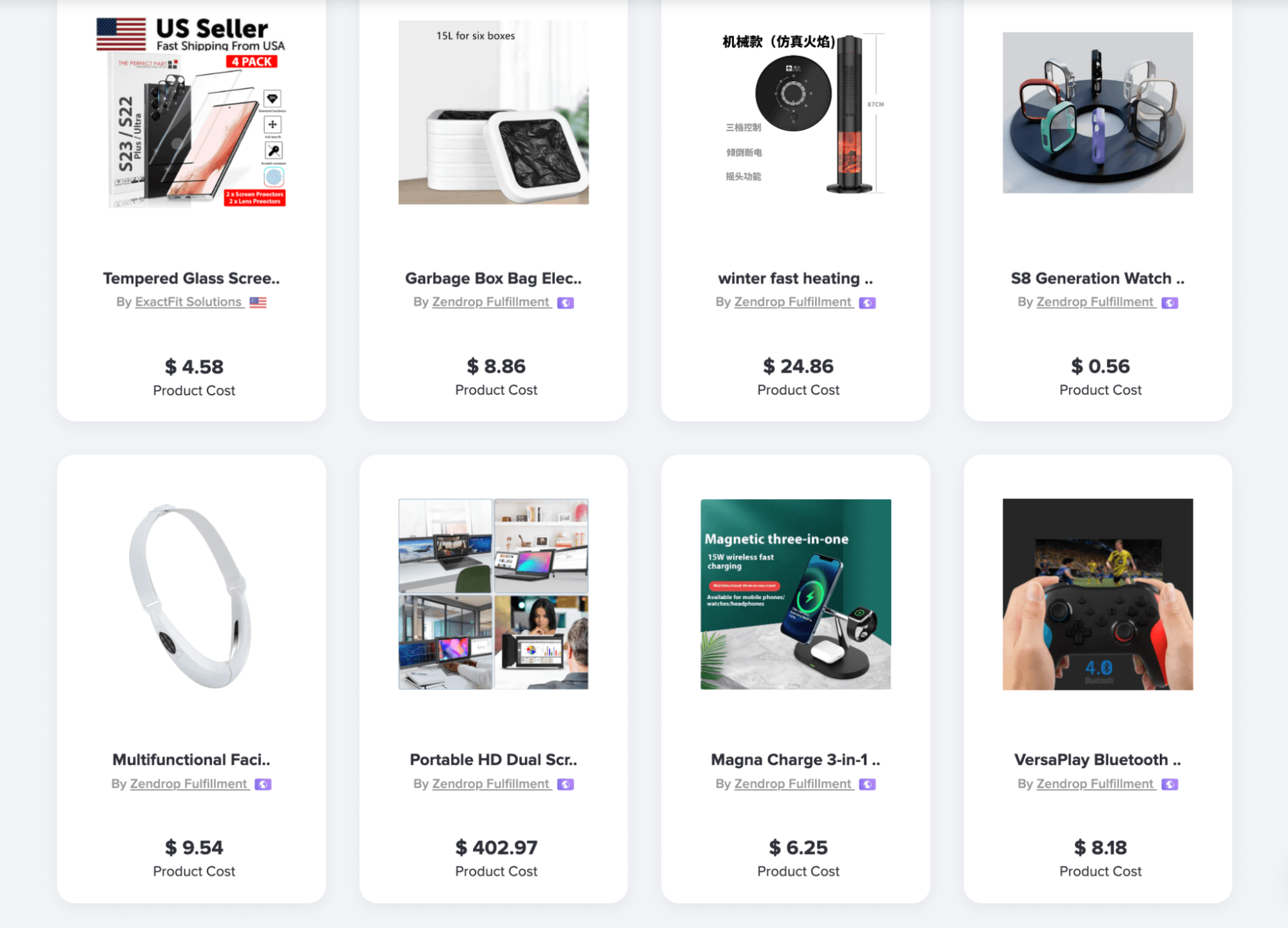
Step 1: Finding a Profitable Niche and Winning Products
What Makes a Good Niche?
Choosing a niche is one of the most crucial steps in your dropshipping journey. A good niche should be:
-
Passionate and Engaging: Ideally, you should have an interest or passion for the niche. This will help you stay motivated and engaged in your business. If you’re enthusiastic about your products, it will reflect in your marketing efforts.
-
Market Demand: Analyze current market trends and consumer behavior. Look for niches that have a steady demand rather than fads that will quickly fade. Tools like Google Trends can help you gauge search interest over time.
-
Profit Margins: A good niche should offer products with healthy profit margins. Aim for products that allow you to mark up prices significantly after covering shipping and supplier costs. Products priced between $20 and $200 often yield better margins.
-
Not Oversaturated: While popular niches can be profitable, they are often flooded with competition. Look for niches that are either emerging or have room for new players.
-
Solves a Problem: Products that solve specific problems tend to sell better. When customers see your product as a solution to their pain points, they are more likely to purchase.
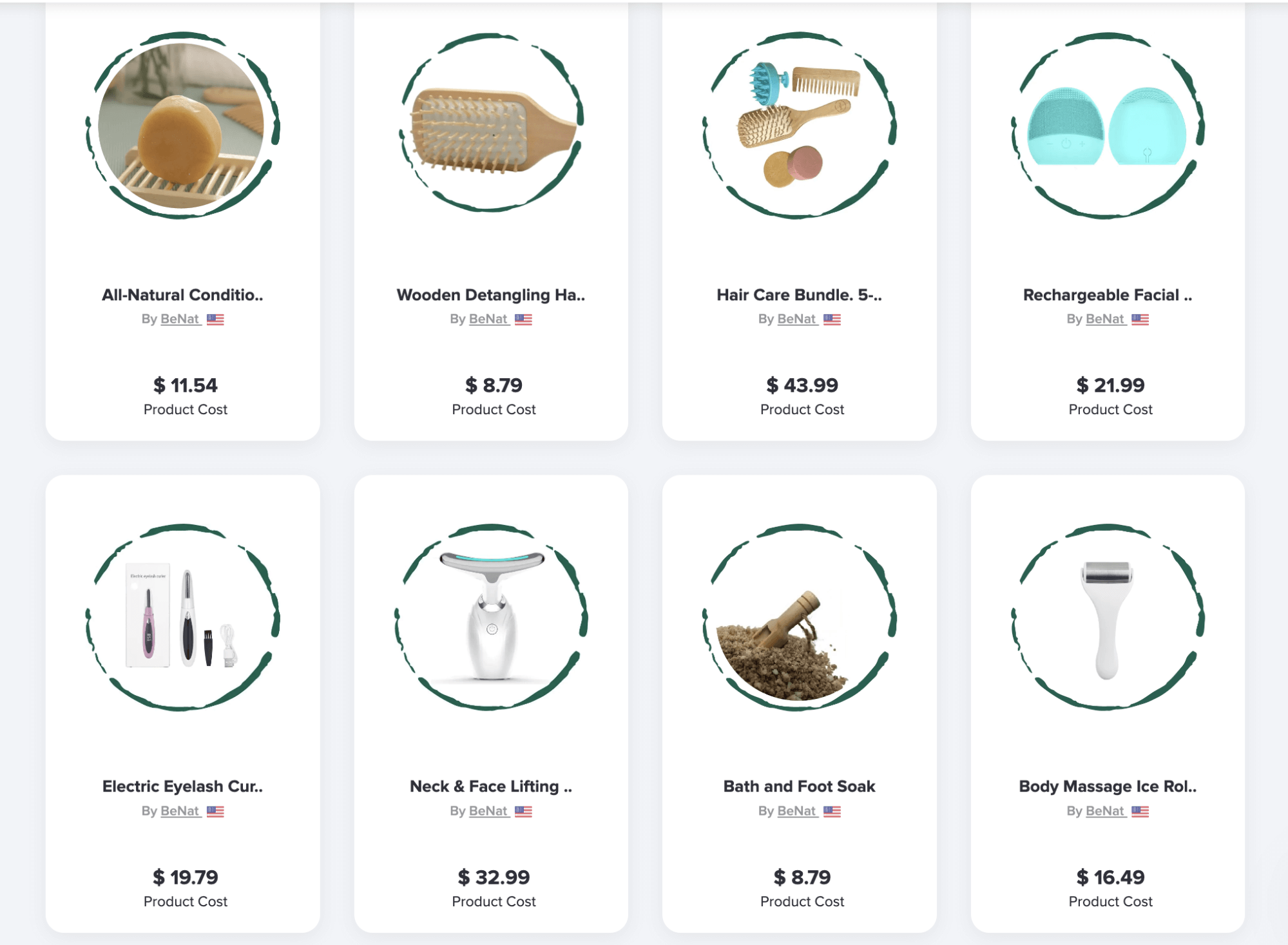
How to Brainstorm Niche Ideas
Finding a niche starts with brainstorming ideas. Here are some methods to help you identify potential niches:
-
Personal Interests and Hobbies: Reflect on your interests, hobbies, and expertise. What do you enjoy discussing or sharing with others? Use these insights as a foundation for your niche.
-
Marketplaces and Supplier Catalogs: Explore popular online marketplaces like Amazon, eBay, and Etsy. Look for trending categories and products. Supplier catalogs, like those from TopDawg, can also provide inspiration by showcasing high-margin products.
-
Social Media Trends: Platforms like Instagram, TikTok, and Pinterest are excellent for spotting trends. Follow influencers in different niches to see what products they are promoting. Check hashtags related to your interests to identify popular items.
-
Forums and Online Communities: Engage in forums like Reddit or niche-specific groups on Facebook. Observe discussions and identify common problems or needs that people express. This can reveal gaps in the market.
-
Google Keyword Planner: Use this tool to find keywords related to your potential niches. This will help you understand the search volume and competition for different terms, guiding you toward viable niches.
Validating Your Niche
Once you’ve brainstormed a few niche ideas, it’s essential to validate them before diving in. Here’s how to ensure your chosen niche has potential:
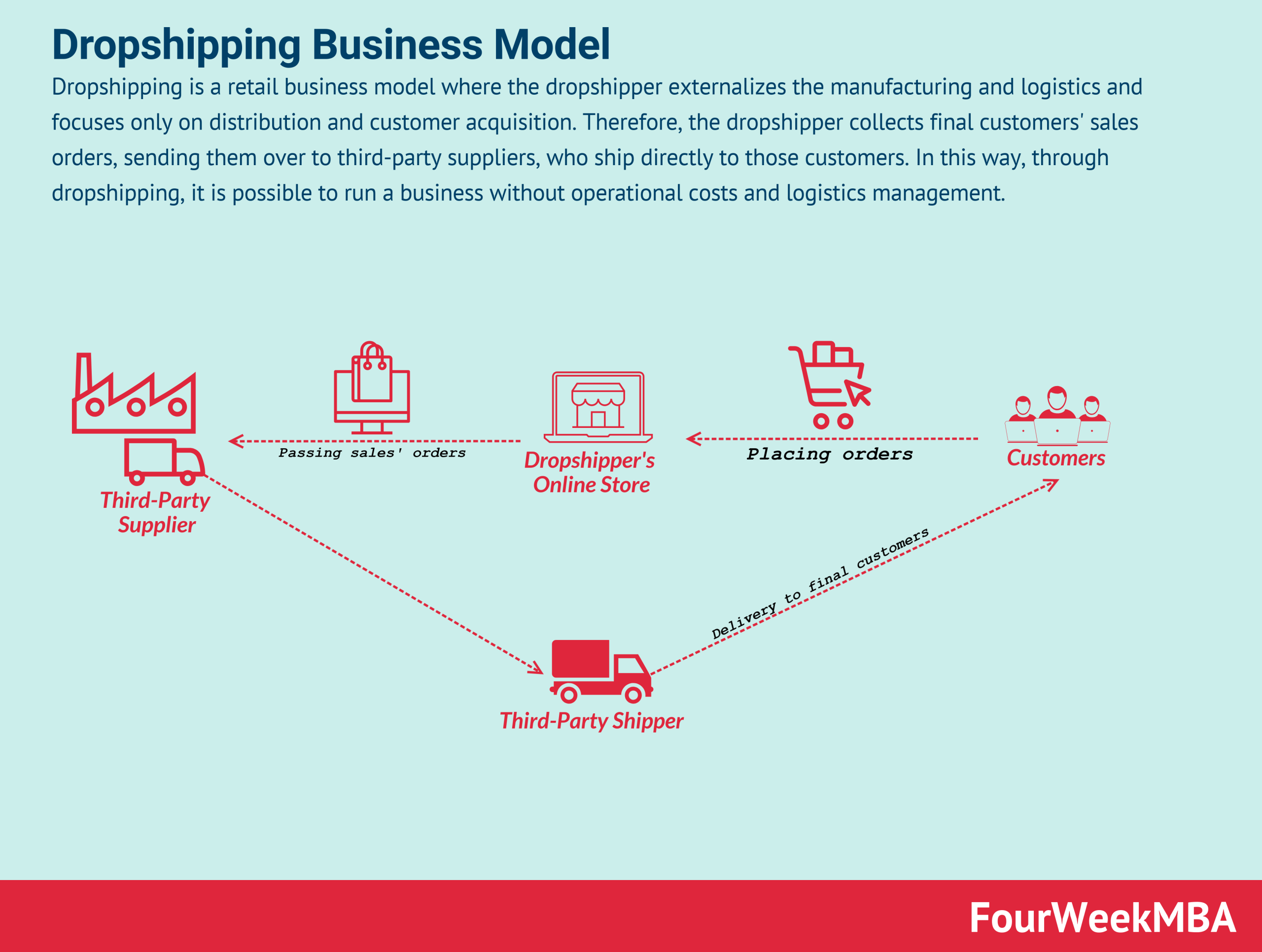
-
Market Research: Conduct thorough market research. Look for statistics and reports on industry growth, consumer spending, and emerging trends. Websites like Statista can provide valuable insights.
-
Competitor Analysis: Analyze your competitors in the niche. Look at their product offerings, pricing strategies, and customer reviews. This can give you insights into what works and what doesn’t.
-
Surveys and Feedback: Create surveys to gather feedback from potential customers. Use platforms like SurveyMonkey to ask about their preferences, pain points, and spending habits related to your niche.
-
Test Marketing: Consider running a small test campaign using platforms like Facebook or Google Ads. You can promote a few products to gauge interest and collect data on customer engagement.
-
Social Proof: Check for existing customer reviews and testimonials on similar products. High ratings and positive feedback indicate a strong demand and customer satisfaction in the niche.
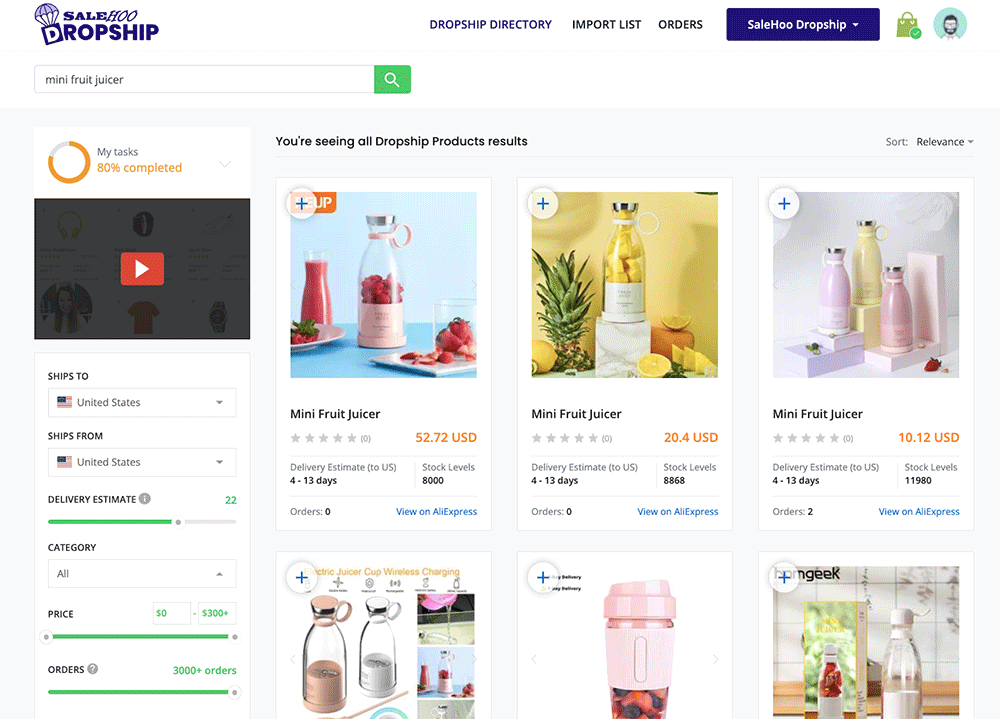
Methods for Finding Winning Products
Identifying winning products is essential for your dropshipping success. Here are effective methods to discover products that resonate with consumers:
-
Supplier Marketplaces: Explore supplier marketplaces like AliExpress, Oberlo, and TopDawg. These platforms list trending products, allowing you to identify items with high sales volumes and positive reviews.
-
Social Media Tools: Utilize social media trend tools like BuzzSumo or TrendSpottr. These can help you identify popular content and products being discussed online, giving you insight into consumer interests.
-
Search Engines and Trends: Use Google Trends to analyze product search trends over time. This tool can help you identify seasonal trends and long-term demand for specific products.
-
Criteria for Good Dropshipping Products:
- Price Point: Products priced between $20 and $200 often provide good margins. Aim for items that are not easily found in local stores, as this gives you a competitive edge.
- Solves a Problem: Focus on products that address specific issues, making them more appealing to consumers.
- Shipping Considerations: Lightweight products that are easy to ship can reduce overhead costs and improve customer satisfaction.
-
Unique Selling Proposition (USP): Look for products that offer something unique or innovative. A strong USP can differentiate your store from competitors.
-
Customer Demand: Monitor customer feedback and reviews on popular e-commerce platforms. Look for patterns in what customers like or dislike about existing products to find opportunities for improvement.
-
Influencer Collaborations: Partner with influencers in your niche to promote specific products. They can provide valuable insights into what resonates with their audience, helping you refine your product selection.
Conclusion
Finding a profitable niche and winning products in the dropshipping space requires creativity, research, and a strategic approach. By understanding what makes a good niche, brainstorming effectively, validating your ideas, and utilizing the right tools for product research, you can set a solid foundation for your dropshipping business. Remember, persistence is key. The journey may have challenges, but with careful planning and execution, you can build a successful online store that resonates with your target audience. Happy dropshipping!
Step 2: Choosing the Right Dropshipping Suppliers
Understanding Dropshipping Suppliers
Choosing the right dropshipping suppliers is a pivotal step in your e-commerce journey. The supplier you select can significantly impact your business’s reputation, product quality, and customer satisfaction. Below, we will explore three major platforms for sourcing dropshipping products—AliExpress, CJ Dropshipping, and USA-Based Suppliers—while also providing actionable insights on how to evaluate potential suppliers effectively.
AliExpress
Pros:
- Vast Product Range: AliExpress offers a massive selection of products across various categories, from electronics to fashion to home goods. This extensive range allows you to find niche items that can set your store apart.
- Low Prices: Many suppliers on AliExpress offer competitive pricing, enabling you to maintain healthy profit margins.
- No Upfront Costs: You can start dropshipping without any upfront inventory investment, making it an attractive option for beginners.
Cons:
- Long Shipping Times: Depending on the supplier’s location, shipping times can be lengthy, especially for customers in the U.S. or Europe. This can lead to dissatisfaction if not communicated properly.
- Variable Product Quality: The quality of products can vary widely between suppliers, making it essential to vet suppliers thoroughly before committing.
- Language Barriers: Many suppliers are based in China, which can lead to communication difficulties regarding product details, shipping, and customer service.
CJ Dropshipping
Pros:
- U.S. Warehouses: CJ Dropshipping has warehouses in the U.S. that can significantly reduce shipping times for North American customers.
- Custom Branding Options: This platform allows for custom branding and packaging, helping you to create a unique shopping experience for your customers.
- Integrated Services: CJ Dropshipping provides various services, including product sourcing, order fulfillment, and even photography, making it easier for you to manage your business.
Cons:
- Higher Costs: While CJ Dropshipping offers faster shipping, the prices may be higher than those on AliExpress, which can cut into your profit margins.
- Less Product Variety: While their selection is growing, it may not be as extensive as AliExpress, limiting your options for niche products.
- Complexity of Use: The platform may have a steeper learning curve for newcomers, especially when navigating its various services.
USA-Based Suppliers
Pros:
- Faster Shipping: Suppliers located in the U.S. can provide significantly quicker shipping times, enhancing customer satisfaction and reducing cart abandonment.
- Better Communication: Working with U.S.-based suppliers often results in fewer language barriers and more reliable communication.
- Higher Product Quality: Generally, products sourced from U.S. suppliers tend to have more consistent quality, as they are subject to stricter regulations and standards.
Cons:
- Higher Prices: Sourcing from U.S. suppliers often means higher costs, which could impact your profit margins.
- Limited Selection: Depending on your niche, you may find fewer product options compared to platforms like AliExpress.
- Minimum Order Requirements: Some U.S. suppliers may have minimum order quantities, which can be restrictive for new dropshippers.
What to Look for in a Good Supplier
To ensure you choose the right supplier for your dropshipping business, consider the following checklist:
-
Communication: Look for suppliers who are responsive and communicate clearly. This will help in resolving issues quickly and maintaining a smooth operation.
-
Shipping Times: Evaluate the average shipping times to your target market. Fast shipping can lead to higher customer satisfaction and repeat business.
-
Product Quality: Research product reviews and order samples to assess quality before listing items in your store. The last thing you want is to sell subpar products that tarnish your brand’s reputation.
-
Return Policies: Understand the supplier’s return policies. A clear and fair return policy can mitigate risks associated with product defects and customer dissatisfaction.
-
Pricing: Ensure the pricing allows you to maintain a healthy profit margin after considering shipping costs and potential discounts.
-
Product Range: A diverse product range enables you to adapt to market trends and customer preferences more effectively.
-
Supplier Reputation: Look for suppliers with positive reviews and testimonials. Platforms like Trustpilot or supplier directories can provide insights into their reliability.
-
Integration Capabilities: Check if the supplier can integrate with your e-commerce platform (e.g., Shopify, WooCommerce) for seamless order processing.
Conclusion
Choosing the right dropshipping supplier can be the difference between success and failure in your e-commerce venture. By evaluating platforms like AliExpress, CJ Dropshipping, and USA-based suppliers against the checklist provided, you can make an informed decision that aligns with your business goals. Remember, the right supplier will not only provide quality products but also contribute to a positive customer experience, helping you build a sustainable and profitable online business. Take your time to research and connect with potential suppliers, and don’t hesitate to reach out for samples or ask questions before making your choice. Happy dropshipping!
Step 3: Building Your Online Store
Getting Started with Shopify for Your Dropshipping Business
Setting up your online store is one of the most exciting steps in your dropshipping journey. Shopify is a leading e-commerce platform that makes this process straightforward, even for beginners. With its user-friendly interface and robust features, you can launch your store quickly and efficiently. Here’s a step-by-step guide to help you build your online store on Shopify.
1. Choosing a Plan
Before diving into the setup, you’ll need to select a Shopify plan that suits your business needs. Shopify offers several pricing tiers, including:
- Basic Shopify: Ideal for newcomers, this plan includes all the essentials you need to start selling online.
- Shopify: This plan is perfect for growing businesses looking for more advanced features.
- Advanced Shopify: Tailored for established businesses that require more customization and reporting tools.
Each plan comes with a 14-day free trial, allowing you to explore the platform without financial commitment. During this trial, you can set up your store, add products, and test the interface before choosing a plan that fits your needs.
2. Picking a Theme
Once you have your plan set up, it’s time to choose a theme for your online store. Your theme determines the look and feel of your website, so select one that aligns with your brand identity. Shopify offers a variety of free and paid themes to choose from.
- Free Themes: These are great for beginners and come with essential features that you can customize.
- Paid Themes: If you want a more unique design or specific functionalities, consider investing in a premium theme.
To pick a theme:
1. Go to the Shopify Theme Store.
2. Browse through categories or use the search function to find a theme that resonates with your brand.
3. Preview the theme to see how it would look with your products before making a final decision.
3. Setting Up Essential Pages
After selecting your theme, it’s crucial to set up essential pages that build trust with your customers and provide necessary information. Here are the key pages you should create:
- About Us: Share your story, mission, and what makes your business unique. This page helps humanize your brand and connect with customers.
- Contact Page: Make it easy for customers to reach you. Include a contact form, email address, and possibly a phone number.
- Policies: Clearly outline your store policies, including shipping, returns, and privacy policies. This transparency builds customer trust and reduces potential disputes.
To create these pages:
1. From your Shopify admin, go to Online Store > Pages.
2. Click Add page and fill in the details for each essential page.
3. Use clear headings and bullet points to improve readability.
4. Installing Key Apps
One of the advantages of using Shopify is its extensive app ecosystem. For dropshipping, certain apps can streamline your operations and enhance customer experience.
- Import Tools: Consider using apps like DSers or CJ Dropshipping. These tools allow you to import products from suppliers directly into your store, manage orders, and fulfill them with ease.
- Marketing Apps: Explore apps for email marketing, social media integration, and SEO optimization to help drive traffic to your store.
- Analytics Tools: Use apps to track customer behavior and sales performance, helping you make data-driven decisions.
To install an app:
1. Go to the Shopify App Store.
2. Search for the app you need and click on it for more details.
3. Click Add app and follow the prompts to install it in your store.
5. Setting Up Payment Gateways
Having a reliable payment system is crucial for any e-commerce business. Shopify supports various payment gateways to facilitate transactions. Here’s how to set them up:
- Go to Settings > Payments in your Shopify admin.
- Choose from Shopify Payments, PayPal, or third-party gateways like Stripe or Square.
- Follow the prompts to enter your account details and configure your payment options.
Make sure to offer multiple payment methods to cater to different customer preferences. This flexibility can significantly enhance the shopping experience and potentially increase sales.
Exploring WooCommerce as an Alternative
While Shopify is a popular choice for dropshipping, WooCommerce is another viable option, especially for those familiar with WordPress. WooCommerce is a plugin that turns a WordPress site into an e-commerce store. It offers flexibility and customization but may require more technical knowledge to set up and manage compared to Shopify.
Conclusion
Building your online store is an exciting journey filled with opportunities. By following these steps to set up your Shopify store, you’ll be well on your way to launching a successful dropshipping business. Remember, the key is to stay patient, keep learning, and adapt as you go. With determination and the right resources, you can create a thriving online store that resonates with your target audience. Happy selling!
Step 4: Marketing Your Dropshipping Business to Get Sales
Social Media Marketing (TikTok & Instagram)
Social media platforms are essential for dropshipping businesses as they provide a direct way to connect with your audience. Among these, TikTok and Instagram stand out for their visual appeal and engagement potential.
1. Create Engaging Content
Focus on creating visually appealing and engaging content that showcases your products. Use high-quality images and videos to highlight features and benefits. For example, if you’re dropshipping kitchen gadgets, create short cooking demonstration videos showing your products in action.
2. Utilize Influencer Marketing
Collaborate with influencers in your niche to reach a broader audience. Identify micro-influencers who have a loyal following and engage with your target demographic. For instance, if you’re selling pet supplies, partner with pet influencers to showcase your products in their daily lives.
3. Leverage User-Generated Content
Encourage your customers to share their experiences with your products on social media. Create a branded hashtag and promote it in your store and marketing materials. This not only provides social proof but also encourages community engagement. For example, if you sell fashion items, ask customers to post photos wearing them with your hashtag.
4. Host Giveaways and Contests
Run contests or giveaways to increase engagement and attract new followers. For instance, you could ask participants to tag friends and share your post for a chance to win one of your products. This tactic can rapidly increase your visibility and follower count.
5. Use Stories and Reels
Take advantage of Instagram Stories and Reels to share behind-the-scenes content, product launches, or special promotions. These features allow you to connect with your audience in real-time and can help drive traffic to your store. For example, showcase new arrivals or limited-time offers through engaging stories.
Paid Advertising (Facebook/Instagram Ads)
Investing in paid advertising can significantly boost your visibility and sales. Facebook and Instagram ads allow you to target specific demographics, making it easier to reach potential customers.
1. Define Your Target Audience
Utilize Facebook’s robust targeting options to reach the right audience. Start by defining your ideal customer based on demographics, interests, and behaviors. For example, if you sell beauty products, target users interested in skincare, cosmetics, and wellness.
2. Create Eye-Catching Ads
Design visually appealing ads that grab attention. Use high-quality images or videos and include compelling copy that highlights the benefits of your products. For instance, create a video ad demonstrating how your skincare line improves skin health.
3. A/B Test Your Ads
Experiment with different ad formats, images, and copy to see what resonates best with your audience. A/B testing allows you to optimize your ads for better performance. For example, test different headlines or call-to-action buttons to see which generates more clicks.
4. Retarget Previous Visitors
Use retargeting ads to reach users who have visited your store but did not make a purchase. This strategy can remind potential customers of products they viewed and encourage them to return. For instance, show ads featuring items they looked at or related products.
5. Monitor and Adjust Campaigns
Regularly analyze your ad performance using Facebook Ads Manager. Look at metrics such as click-through rates and conversion rates to assess what’s working. Adjust your campaigns based on data insights to maximize your return on investment.
Search Engine Optimization (SEO)
SEO is a long-term strategy that can drive organic traffic to your dropshipping store. By optimizing your website and content, you can improve your search engine rankings and attract more visitors.
1. Conduct Keyword Research
Identify relevant keywords that potential customers are searching for. Use tools like Google Keyword Planner or Ubersuggest to find high-volume keywords related to your products. For example, if you sell pet supplies, target keywords like “best dog toys” or “eco-friendly pet products.”
2. Optimize Product Descriptions
Ensure that your product descriptions are unique and include your target keywords naturally. Write compelling descriptions that highlight features, benefits, and uses. For instance, if you’re selling a yoga mat, include details about its grip, thickness, and eco-friendly materials.
3. Improve Website Speed and Mobile Responsiveness
A fast, mobile-friendly website enhances user experience and can improve your search rankings. Use tools like Google PageSpeed Insights to analyze your site’s performance and make necessary improvements.
4. Create High-Quality Blog Content
Start a blog on your website and regularly publish high-quality content related to your niche. This can help you rank for additional keywords and establish your brand as an authority. For example, if you sell kitchen gadgets, write articles about cooking tips or recipes featuring your products.
5. Build Backlinks
Encourage other websites to link to your store to improve your domain authority. You can achieve this by guest blogging, collaborating with influencers, or submitting your site to online directories. Backlinks signal to search engines that your site is trustworthy and relevant.
Email Marketing
Email marketing is a powerful tool for nurturing relationships with customers and driving repeat sales. It allows you to communicate directly with your audience and promote your products effectively.
1. Build Your Email List
Start building your email list from day one. Offer incentives such as discounts, free shipping, or exclusive content in exchange for email sign-ups. For example, you could offer a 10% discount on the first purchase for new subscribers.
2. Segment Your Audience
Segment your email list based on customer behavior, interests, or demographics. This allows you to send personalized content and offers that resonate with different segments. For instance, send tailored emails featuring pet supplies to customers who have previously purchased pet-related products.
3. Create Compelling Email Campaigns
Design eye-catching emails with clear calls to action. Include product recommendations, promotions, and engaging content that encourages recipients to visit your store. For example, create a seasonal campaign showcasing new arrivals or special holiday deals.
4. Automate Your Email Marketing
Use email marketing platforms like Mailchimp or Klaviyo to automate your campaigns. Set up welcome emails, abandoned cart reminders, and follow-up messages to engage customers without manual effort. For instance, send a reminder email to customers who left items in their cart.
5. Analyze and Optimize
Regularly analyze your email campaign performance metrics, such as open rates and click-through rates. Use this data to refine your strategies and improve future campaigns. For example, experiment with different subject lines or sending times to see what yields the best results.
Conclusion
Marketing your dropshipping business requires a multifaceted approach, combining social media, paid advertising, SEO, and email marketing. By implementing these strategies and continuously optimizing your efforts, you can effectively reach your target audience, drive traffic to your store, and ultimately increase sales. Remember, consistency and adaptability are key to building a successful online business.
Common Mistakes to Avoid as a Beginner
1. Choosing a Bad Niche
Mistake: One of the most critical mistakes beginners make is selecting a niche without proper research. Many may opt for trendy items that lack sustainability or fail to resonate with a specific audience.
Solution: Conduct thorough market research to identify niches with consistent demand. Utilize tools like Google Trends, social media insights, and keyword research to gauge interest. Look for niches that balance passion and profitability—consider products that solve problems or cater to specific interests.
2. Not Testing Products
Mistake: New dropshippers often jump straight into selling without testing their products. This can lead to a poor customer experience and increased returns.
Solution: Before fully committing to a product, order samples for yourself. Evaluate the quality, shipping times, and packaging. Testing allows you to provide honest reviews and ensures that the products meet customer expectations.
3. Poor Customer Service
Mistake: Many beginners underestimate the importance of customer service, thinking that dropshipping shields them from direct customer interactions. However, this can lead to negative reviews and lost sales.
Solution: Establish clear communication channels and respond promptly to inquiries. Create a FAQ section on your website to address common concerns. Consider using chatbots for immediate responses and ensure that your returns and refunds policy is transparent and fair.
4. Ignoring Shipping Times
Mistake: Beginners often overlook shipping times, which can lead to frustrated customers. Long delivery periods can significantly impact customer satisfaction and repeat business.
Solution: Be upfront about shipping times on your website. Choose suppliers with reliable shipping options, preferably those located closer to your target market. Consider offering expedited shipping options for an additional fee to cater to customers who need faster delivery.
5. Unrealistic Profit Expectations
Mistake: New dropshippers frequently set unrealistic expectations for profits, believing that dropshipping is a get-rich-quick scheme. This mindset can lead to disappointment and poor decision-making.
Solution: Educate yourself about realistic profit margins in dropshipping. Understand that while some products may yield high profits, the average markup is typically lower than expected (around 10-30%). Set achievable goals based on research and market analysis, and be prepared for a gradual growth trajectory.
6. Not Analyzing Competitors
Mistake: Beginners often neglect competitor analysis, which can lead to missed opportunities or costly mistakes in marketing and product selection.
Solution: Identify your main competitors and analyze their offerings, pricing strategies, and customer engagement. Use tools like SEMrush or SimilarWeb to gather data on their traffic and marketing tactics. Learn from their successes and failures to refine your own strategies.
7. Failing to Build a Brand
Mistake: Many dropshippers focus solely on the products and neglect branding. A lack of brand identity can make it difficult to stand out in a crowded market.
Solution: Invest time in developing a strong brand identity that resonates with your target audience. Create a memorable logo, consistent branding across your website and social media, and a unique value proposition. Building a brand fosters trust and encourages customer loyalty.
8. Overcomplicating Marketing Strategies
Mistake: Beginners sometimes overcomplicate their marketing efforts, trying to utilize every platform and strategy available without a clear focus.
Solution: Start with a few key marketing channels that align with your target audience. Focus on building a strong social media presence, utilizing email marketing, and optimizing your website for SEO. As you gain experience and results, expand your marketing efforts strategically.
9. Neglecting Analytics
Mistake: Many beginners fail to track their store’s performance, leading to missed insights that could enhance their business strategy.
Solution: Utilize analytics tools (like Google Analytics) to monitor website traffic, conversion rates, and customer behavior. Regularly review these metrics to identify trends, strengths, and weaknesses in your business. This data-driven approach will inform your decisions and help you adapt to changing market conditions.
10. Skipping Legal Considerations
Mistake: New dropshippers often overlook the legal aspects of running an online business, which can lead to issues down the line.
Solution: Familiarize yourself with the legal requirements for e-commerce in your region, including tax obligations, business licenses, and consumer protection laws. Consult with a legal professional if necessary to ensure compliance and protect your business.
By avoiding these common mistakes, you can set a solid foundation for your dropshipping venture. Remember, every successful entrepreneur has faced challenges—learning from them is what will ultimately lead you to success. Stay patient, stay informed, and keep pushing forward!
Frequently Asked Questions (FAQs) about dropshipping items
1. What is dropshipping, and how does it work?
Dropshipping is a retail fulfillment method where a store doesn’t keep the products it sells in stock. Instead, when you sell a product, you purchase the item from a third party (usually a wholesaler or manufacturer) who ships it directly to the customer. This means you never handle the product yourself, allowing you to focus on marketing and customer service.
2. How much money do I need to start dropshipping?
Starting a dropshipping business can be relatively low-cost compared to traditional retail models. You might need anywhere from $200 to $2,000 to start, depending on the platform you choose and your marketing budget. Costs can include setting up an e-commerce website, purchasing a domain, marketing expenses, and any tools or apps you may want to use to streamline your business.
3. Do I need to register a company to start dropshipping?
While it’s possible to start dropshipping as a sole proprietor without formal registration, it’s highly recommended to register your business. Doing so can provide legal protection, enhance your credibility, and allow you to open a business bank account. Depending on your location, you may also need to obtain permits or licenses to operate legally.
4. How do I choose the right products to dropship?
Selecting the right products is crucial for your success. Focus on items that have high demand and good profit margins. Research trending products in categories like apparel, beauty, home décor, and pet supplies. Utilize tools like Google Trends, social media, and market research reports to identify what consumers are currently interested in.
5. What are the best platforms to use for dropshipping?
Some popular platforms for dropshipping include Shopify, WooCommerce, BigCommerce, and Wix. These platforms offer user-friendly interfaces, payment gateways, and integrations with dropshipping suppliers. Choose one that aligns with your technical skills and business needs.
6. How do I handle returns and refunds?
Handling returns and refunds can be a bit tricky in dropshipping since you don’t physically manage the inventory. It’s essential to establish a clear return policy upfront and communicate it to your customers. Work closely with your suppliers to understand their return process, and be prepared to manage customer inquiries promptly and professionally.
7. How do I market my dropshipping store effectively?
Effective marketing strategies include social media marketing, content marketing, search engine optimization (SEO), and paid advertising. Leverage platforms like Facebook and Instagram for targeted ads, and consider influencer partnerships to expand your reach. Building an email list can also help you engage with customers directly and promote new products.
8. Can I automate my dropshipping business?
Yes, many aspects of a dropshipping business can be automated, including order processing, inventory management, and customer communication. Tools like Oberlo, Spocket, or Printful can help automate product imports and order fulfillment, allowing you to focus on scaling your business.
9. What are the common challenges in dropshipping?
Common challenges include managing supplier relationships, maintaining product quality, handling shipping delays, and competing with other retailers. To overcome these challenges, establish strong communication with your suppliers, choose reliable ones, and continuously monitor your business performance to make informed adjustments.
10. Is dropshipping a sustainable business model?
Dropshipping can be a sustainable business model if approached correctly. Focus on building a strong brand, providing excellent customer service, and continuously adapting to market trends. While profit margins may be lower than traditional retail, the low overhead costs can lead to a profitable business if you effectively manage your operations and marketing strategies.
Conclusion: Your Next Steps to Launching Your Business
Your Path to Dropshipping Success
Starting your dropshipping business is an exciting journey, and while the process may seem daunting, breaking it down into manageable steps can set you up for success. Here’s a roadmap to guide you through the initial phases of launching your online store.
-
Choose Your Niche: Begin by identifying a niche that resonates with your interests and has market demand. Research trending products, such as apparel, beauty products, or kitchen gadgets, and consider high-margin items that can provide a solid profit.
-
Select a Reliable Supplier: Partnering with trustworthy suppliers is crucial. Look for suppliers that offer a wide range of products, competitive pricing, and reliable shipping options. Platforms like TopDawg and Shopify can help you find reputable suppliers with dropship-ready catalogs.
-
Set Up Your Online Store: Use e-commerce platforms like Shopify or WooCommerce to create your store. Ensure your website is user-friendly and visually appealing, with clear product descriptions and high-quality images.
-
Market Your Store: Utilize social media, email marketing, and influencer collaborations to promote your products. Content marketing can also help you connect with your audience and drive traffic to your store.
-
Analyze and Adapt: After launching, continuously monitor your store’s performance. Use analytics to understand customer behavior and adjust your strategy accordingly.
Remember, dropshipping is not a get-rich-quick scheme. It requires dedication, learning, and hard work. Embrace the challenges as opportunities to grow and refine your business acumen.
Take the First Step!
Today, commit to taking that first step. Whether it’s conducting product research, setting up your store, or reaching out to suppliers, every small action brings you closer to your goal. Your entrepreneurial journey awaits—don’t let it pass you by! Start today, and turn your aspirations into reality.
Important Disclaimer
⚠️ Important Disclaimer
The information provided in this guide is for educational purposes only. Starting a business involves risks, and success is not guaranteed. Please conduct your own thorough research and consider consulting with financial and legal professionals before making any business decisions.
